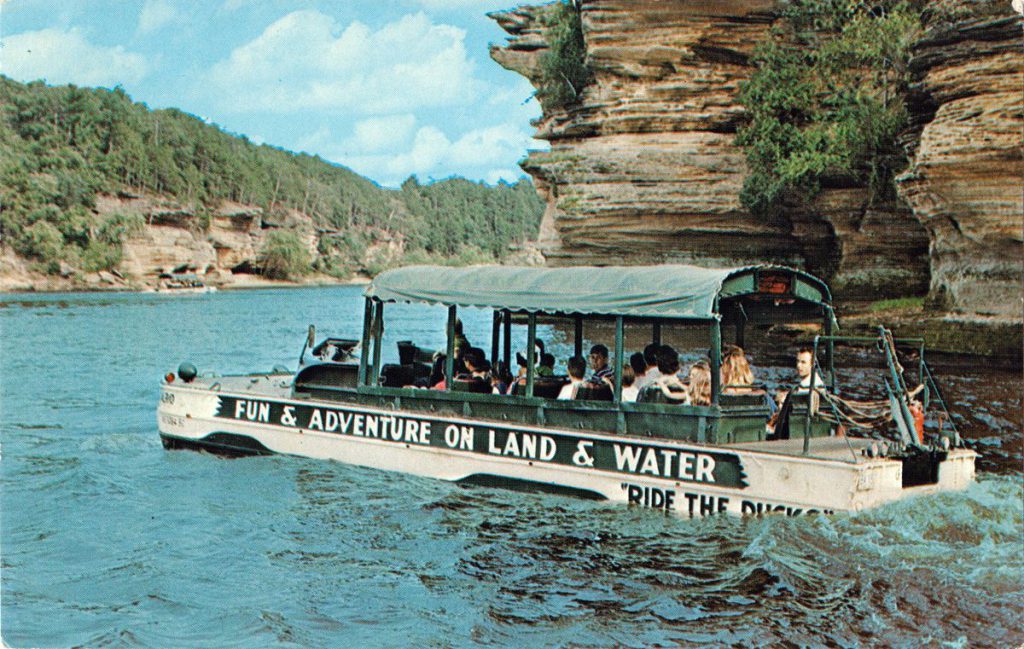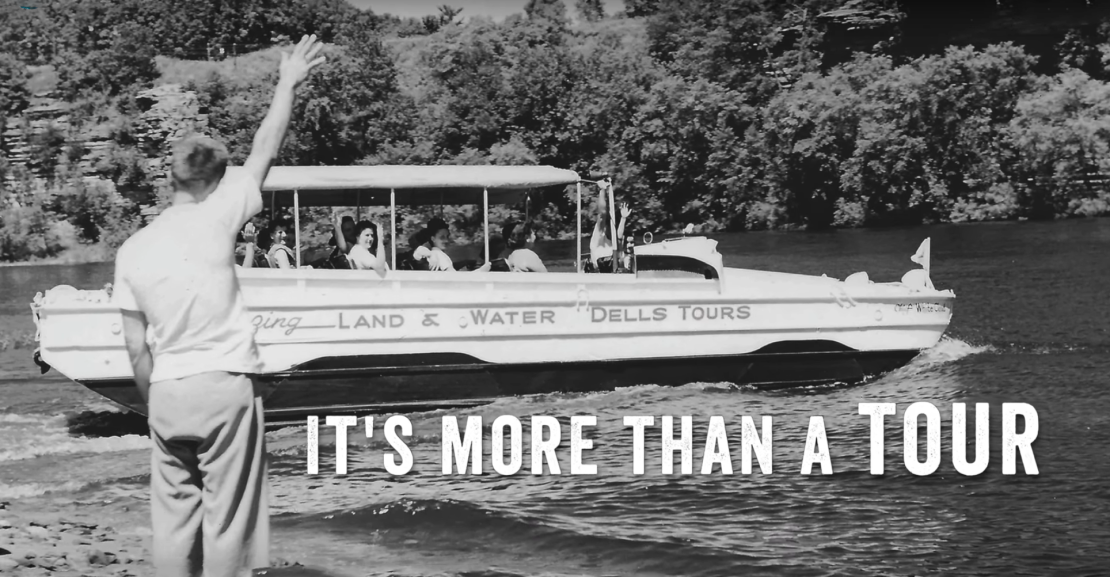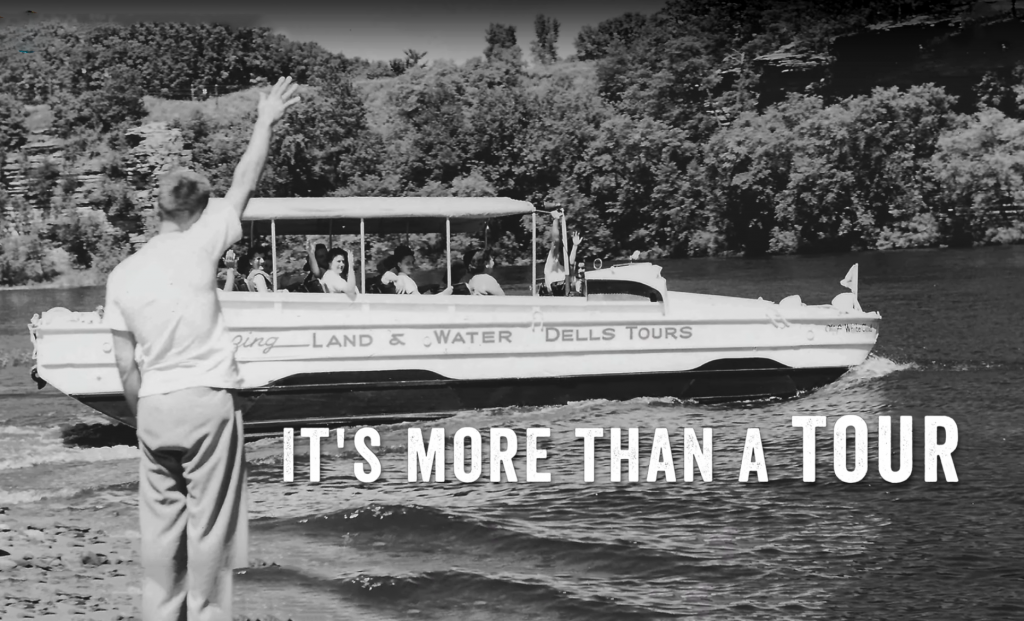
Billed as the water-park capital of the world, Wisconsin Dells is a popular vacation and weekend-getaway destination for folks throughout the Midwest. Located in the heart of the Dairy State, “the Dells” is about a three-hour drive from Chicago–just long enough to feel like a road trip, and short enough to be tolerable with youngsters in the car.
More vacation and road-trip fun
Founded as Kilbourn City in 1857, the town of Wisconsin Dells was primarily a rail stop utilized by loggers. The name change came in 1931, as a part of a plan to help call attention to the area’s natural beauty for the purpose of tourism.
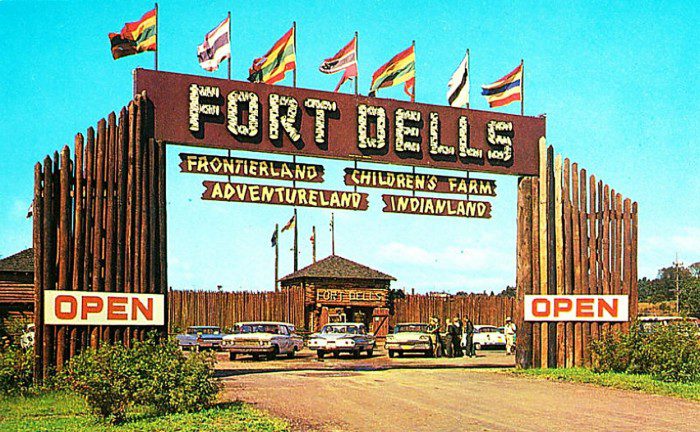
Indeed, long before the water parks began sprouting up, the Dells was best known for cozy, dozen-room motels and breathtaking-but-accessible wilderness areas.
Located on the Wisconsin River and near Lake Delton, the Dells was (and remains) an ideal location for city folks to take in some unspoiled landscape, including the awesome riverside sandstone formations for which Central Wisconsin is famous.
It was in 1946 that a man named Melvin Flath found a way to help tourists best appreciate the area’s beautiful waterways. Flath purchased at auction a small fleet of retired amphibious military vehicles, fitting each with a fresh paint job and a canopy for sun protection. Already fitted with seating for 24 troops, these awkward-looking-but-durable tour vessels proved to be attractions in themselves, and became very popular with paying tourists.
The business proved to be so successful that the vehicle fleet was expanded to 37 for the 1947 season.
But what of these rolling, floating tour busses? What were they, and where did they come from? What came to be known as “Ducks” were originally dubbed DUKW by the military. The clumsy acronym was applied by GMC, the vehicle’s manufacturer, and was General Motors’ internal code for the first year of assembly (D, for 1942), U for utility (amphibious), K for all-wheel drive, and W for twin rear axles.
[youtube https://www.youtube.com/watch?v=62n0hUZadm0]
Each Duck weighed about 14,000 pounds and was powered by a 270-cubic-inch GMC 6-cylinder gasoline engine. The only transmission available was a 5-speed manual unit with overdrive, which was coupled to a transfer case that shuttled power to the single rear propeller. The top speed of a Duck is about 50 mph on land, and a little over 6 mph in the water.
Ducks saw a significant amount of service time in World War II, with around 2000 examples being provided to the British military as part of the Lend-Lease Act. Among a number of military operations, Ducks were part of the D-Day invasion, transferring troops and equipment to the beach at Normandy.
Mass-Transit Madness! A Gallery of Classic Bus Ads
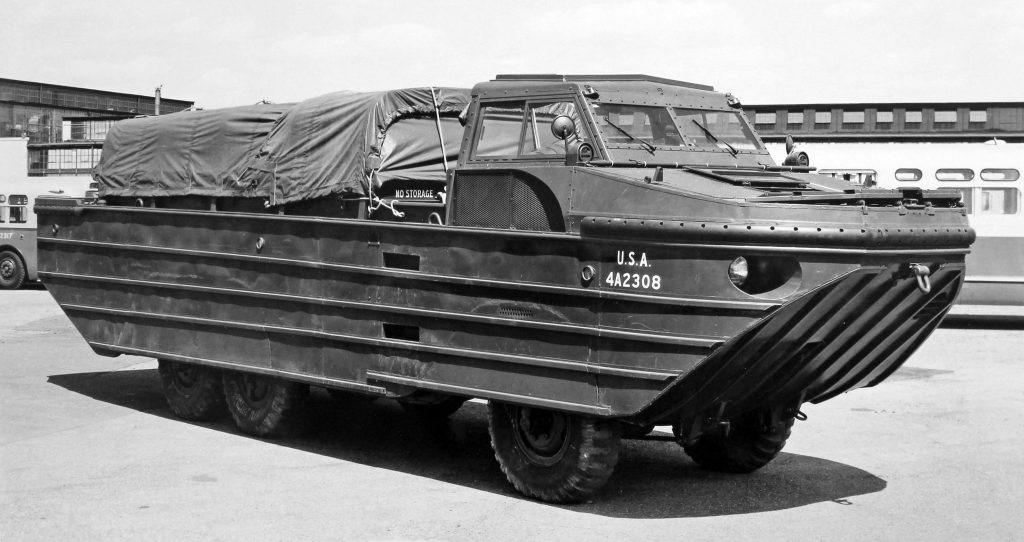
Mostly retired from U.S. service after WWII, a number of Ducks remained in military use in Britain and Australia. The Korean War saw a few mothballed Ducks re-enter service for deployment in that engagement.

Remaining Ducks were dismantled or auctioned to the general public beginning in the mid-Forties. As for Melvin Flath, he sold his Duck-tour business in 1952. By 1956, the tour company began operating under the Original Wisconsin Ducks banner, which it is still known by today. The company is reportedly maintaining a fleet of 97 Ducks, which must be the largest collection in existence.

To keep their Ducks on the road and in the water, Original Wisconsin Ducks maintains a team of technicians on staff. Over the years, each Duck has been upgraded with disc brakes and power steering to help improve safety and drivability.
Duck-tour season opens in mid-March each year, and closes in November. Tickets for the regular one-hour tour run about $30 for adults, and $15 for kids.
This author well recalls his trips on the Ducks, the last of which was at least 45 years ago. Apart from the great sandstone walls that line the river, what I remember most was the impressive splash made by the Duck hitting the water from the road at what must have been 10 mph.
Ducks are employed by a number of tour companies around the country, though no destination is more closely identified with these squat mechanical amphibians than the Dells.
The Ducks are a throwback to a simpler time in the Dells, an era before water parks and air-conditioned chain hotels. What makes me happy is that the Ducks are still running, and, by the look of things, will be for some time to come.
I Broke the 50-MPG Barrier Driving Through Wisconsin. It Was Hell.
